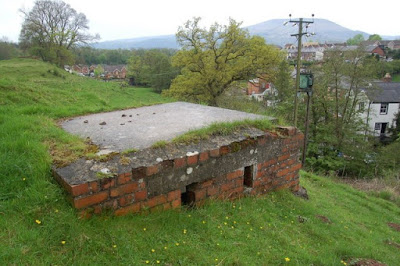St Illtyd's Church, Mamhilad

St Illtyd’s Church, Mamhilad The church looking at the south porch The church stands on a slight hill on Old Abergavenny Road off the A4042. Opposite is the Star public house, just a couple of minutes from the Monmouthshire and Brecon Canal. The church showing the south and west porches with the bellcote above the west porch. The latter is used as a vestry. Built in the Perpendicular style, the church comprises a nave, chancel, two porches and a bellcote. It is grade II* listed. The existing features are late medieval, or of the restoration undertaken in 1864–1865 and of the further restoration that took place more recently in 1999–2000. It is still an active church in the parish of Mamhilad with Monkswood with Glascoed. The stile showing the gravestone of Aaron Morris The visit gets interesting the moment you reach the stile entering the churchyard for the stile is the gravestone of Aaron Morris who died 5 May 1680. In 195...


